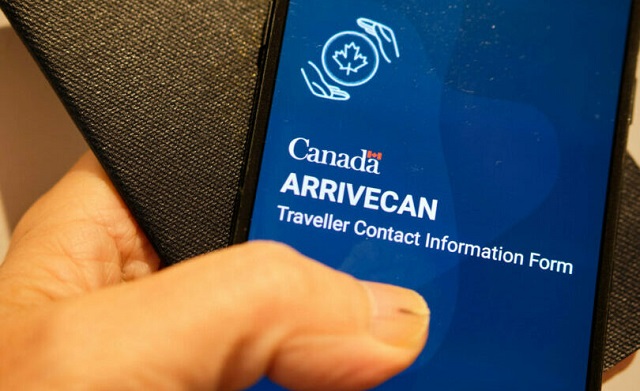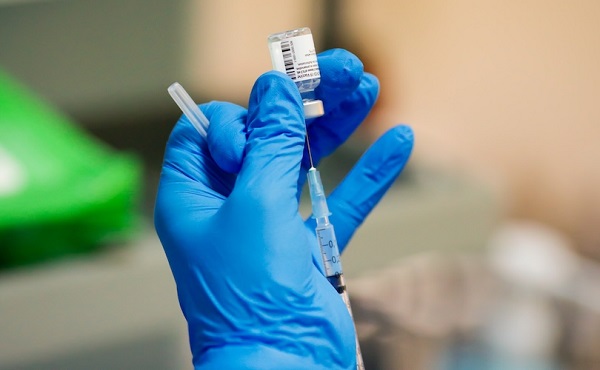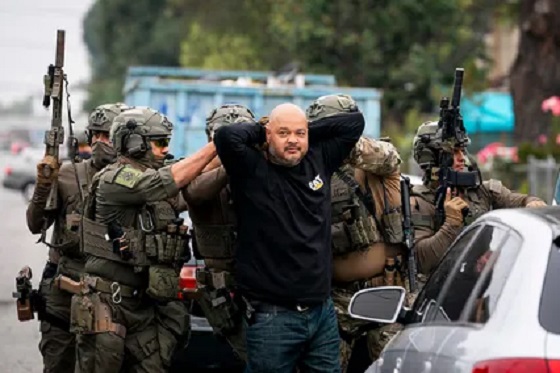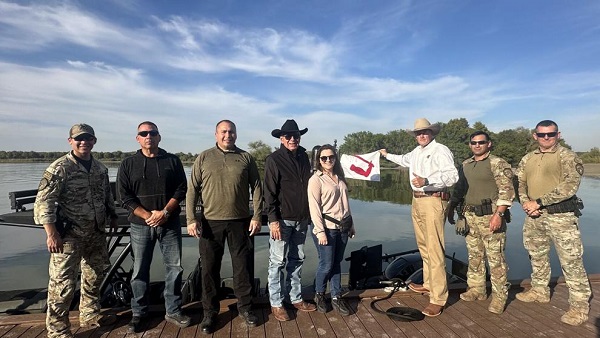COVID-19
Canada’s border agency says low risk of COVID spreading via paper used to justify ArriveCAN

From LifeSiteNews
The controversial app, which was initially slated to cost taxpayers $80,000 but ended up costing over $50 million, is currently under investigation over allegations of corruption related to government contracts.
Despite Canadian federal authorities at the time admitting the risk of getting a COVID infection from paper forms was low, the Canada Border Services Agency (CBSA) said it was that fear that spurred the creation of the federal government’s $59.5 million scandal-ridden ArriveCAN travel app.
The admission was made by the CBSA’s vice-president Jonathan Moor on April 3, during a testimony at a House of Commons public accounts committee meeting.
“We were told we could catch COVID from touching documents,” said Moor. “Our number one priority initially working with that was to get the electronic form up and running.”
Despite Moor’s claims, Canada’s Public Health Agency’s deputy chief public health officer, Dr. Howard Njoo, had told reporters at the start of the COVID crisis that there was no evidence the coronavirus could be transmitted via paper.
“For postal workers, I am not quite sure what the risk would be,” said Njoo on March 23, 2020. “The risk is not really out there. There should be no chance of interaction.”
The agency noted at the time that proper hand-washing was enough for federal workers who handled a lot of paperwork.
Despite the agency itself admitting there was no risk of virus transmission via paper forms, Moor on March 26, during testimony at the House of Commons government operations committee, again claimed getting infections from paper was a reason ArriveCAN was needed.
“A lot of the individual Border Services officers really were very reluctant to touch paper because the Public Health Agency had said you can catch Covid from touching paper, so the necessity to get a paperless process in place was really important,” said Moor.
Moor, during testimony, also defended his agency’s work on the travel app, but admitted, “We know we made mistakes.”
This prompted Bloc Québécois MP Nathalie Sinclair-Desgagné to say to him, “Mr. Moor, all the countries in the world had to deal with that crisis and very few of them thought to have $60 million for an app like ArriveCAN.”
“In some self-respecting countries there are internal controls,” she added.
She then asked Moor if he thought he did a “good job,” to which he replied, “I do believe I did my job well during the pandemic.”
“This is a time where people were crossing the border to return back to Canada when we were told we could catch COVID from touching documents,” he said.
Besides the risk of getting infected from paper as being a reason for needing to create ArrriveCAN, the CBSA had also suggested other reasons why it was needed. In a report from 2023, it claimed that the app had saved travelers “five minutes” of time at border crossings, however, this claim was disputed by the Customs and Immigration Union.
The CBSA has also claimed that ArriveCAN “saved lives,” which is a claim it has recognized as being uncertain.
“The Agency cannot quantify the exact number of lives indirectly saved through ArriveCan,” it told MPs on December 7, 2023.
Canadians were told ArriveCAN was supposed to have cost only $80,000, but the number quickly ballooned to $54 million, with the latest number showing it cost some $59.5 million.
As for the app itself, it was riddled with tech glitches along with privacy concerns from users.
ArriveCAN was introduced in April 2020 by the government of Prime Minister Justin Trudeau and made mandatory in November 2020. The app was used by the federal government to track the COVID jab status of those entering the country and enforce quarantines when deemed necessary.
When the app was mandated, all travelers entering Canada had to use it to submit their travel and contact information as well as any COVID vaccination details before crossing the border or boarding a flight.
In February, LifeSiteNews reported that Conservative Party of Canada MPs accused the CBSA of lying to Parliament over sweetheart contracting approvals concerning ArriveCAN.
Troubled Travel apps’ creation is currently under investigation
Canadian Auditor General Karen Hogan announced an investigation of ArriveCAN in November 2022 after the House of Commons voted 173-149 for a full audit of the controversial app.
The House of Commons Standing Committee on Government Operations and Estimates (OGGO) is investigating how various companies such as Dalian, Coaradix, and GC Strategies received millions in taxpayer dollars to develop the contentious quarantine-tracking program.
LifeSiteNews reported that an investigation into ArriveCAN by Alexander Jeglic, the government’s procurement ombudsman, revealed that three-quarters of the contractors who were paid to work on ArriveCAN did not do anything in building the scandal-plagued app.
The CBSA was tasked with building the ArriveCAN app, and thus far, the investigation’s report singles out GC Strategies, saying the two-man company did not prove that its list of subcontractors was qualified to work on the app.
The procurement ombudsman’s report also found “numerous examples” in which GC Strategies “had simply copied and pasted” required work experience that was listed by the government for its contractors.
The report also noted that it was unusual the government used criteria for the app’s tender that were “overly restrictive and favoured” GC Strategies, which won the contract bid despite the fact no other bids were submitted.
Last year, LifeSiteNews reported on two tech entrepreneurs testifying before the committee that during the development of the ArriveCAN travel app they saw firsthand how federal managers engaged in “extortion,” “corruption,” and “ghost contracting,” all at the expense of taxpayers.
COVID-19
Trump DOJ seeks to quash Pfizer whistleblower’s lawsuit over COVID shots

From LifeSiteNews
The Justice Department attorney did not mention the Trump FDA’s recent admission linking the COVID shots to at least 10 child deaths so far.
The Trump Department of Justice (DOJ) is attempting to dismiss a whistleblower case against Pfizer over its COVID-19 shots, even as the Trump Food & Drug Administration (FDA) is beginning to admit their culpability in children’ s deaths.
As previously covered by LifeSiteNews, in 2021 the BMJ published a report on insider information from a former regional director of the medical research company Ventavia, which Pfizer hired in 2020 to conduct research for the company’s mRNA-based COVID-19 shot.
The regional director, Brook Jackson, sent BMJ “dozens of internal company documents, photos, audio recordings, and emails,” which “revealed a host of poor clinical trial research practices occurring at Ventavia that could impact data integrity and patient safety […] We also discovered that, despite receiving a direct complaint about these problems over a year ago, the FDA did not inspect Ventavia’s trial sites.”
According to the report, Ventavia “falsified data, unblinded patients, employed inadequately trained vaccinators, and was slow to follow up on adverse events reported in Pfizer’s pivotal phase III trial.” Overwhelmed by numerous problems with the trial data, Jackson filed an official complaint with the FDA.
Jackson was fired the same day, and Ventavia later claimed that Jackson did not work on the Pfizer COVID-19 shot trial; but Jackson produced documents proving she had been invited to the Pfizer trial team and given access codes to software relating to the trial. Jackson filed a lawsuit against Pfizer for violating the federal False Claims Act and other regulations in January 2021, which was sealed until February 2022. That case has been ongoing ever since.
Last August, U.S. District Judge Michael Truncale dismissed most of Jackson’s claims with prejudice, meaning they could not be refiled. Jackson challenged the decision, but the Trump DOJ has argued in court to uphold it, Just the News reports, with DOJ attorney Nicole Smith arguing that the case concerns preserving the government’s unfettered power to dismiss whistleblower cases.
The rationale echoes a recurring trend in DOJ strategy that Politico described in May as “preserving executive power and preventing courts from second-guessing agency decisions,” even in cases that involve “backing policies favored by Democrats.”
Jackson’s attorney Warner Mendenhall responded that the administration “really sort of made our case for us” in effectively admitting that DOJ is taking the Fair Claims Act’s “good cause” standard for state intervention to mean “mere desire to dismiss,” which infringes on his client’s “First Amendment right to access the courts, to vindicate what she learned.”
Mendenhall added that in a refiled case, Jackson “may be able to bring a very different case along the same lines, but with the additional information” to prove fraud, whereas rejection would send the message that “if fraud involves government complicity, don’t bother reporting it.”
That additional information would presumably include the FDA’s recent admission that at least 10 children the agency has reviewed so far “died after and because of receiving COVID-19 vaccination.”
“The truth is we do not know if we saved lives on balance,” admitted FDA Chief Medical Officer Vinay Prasad in a recent leaked email. “It is horrifying to consider that the U.S. vaccine regulation, including our actions, may have harmed more children than we saved. This requires humility and introspection.”
The COVID shots have been highly controversial ever since the first Trump administration’s Operation Warp Speed initiative prepared and released them in a fraction of the time any previous vaccine had ever been developed and tested. As LifeSiteNews has extensively covered, a large body of evidence has steadily accumulated over the past five years indicating that the COVID jabs failed to prevent transmission and, more importantly, carried severe risks of their own.
Ever since, many have intently watched and hotly debated what President Donald Trump would do about the situation upon his return to office. Though he never backed mandates like former President Joe Biden did, for years Trump refused to disavow the shots to the chagrin of his base, seeing Operation Warp Speed as one of his crowning achievements. At the same time, during his latest run he embraced the “Make America Healthy Again” movement and its suspicion of the medical establishment more broadly.
So far, Trump’s second administration has rolled back several recommendations for the shots but not yet pulled them from the market, despite hiring several vocal critics of the COVID establishment and putting the Department of Health & Human Services under the leadership of America’s most prominent anti-vaccine advocate, Robert F. Kennedy Jr. Most recently, the administration has settled on leaving the current jabs optional but not supporting work to develop successors.
In a July interview, FDA Commissioner Marty Makary asked for patience from those unsatisfied by the administration’s handling of the shots, insisting more time was needed for comprehensive trials to get more definitive data.
COVID-19
Canadian Health Department funds study to determine effects of COVID lockdowns on children

From LifeSiteNews
The commissioned study will assess the impact on kids’ mental well-being of COVID lockdowns and ‘remote’ school classes that banned outdoor play and in-person learning.
Canada’s Department of Health has commissioned research to study the impact of outdoor play on kids’ mental well-being in light of COVID lockdowns and “remote” school classes that, for a time, banned outdoor play and in-person learning throughout most of the nation.
In a notice to consultants titled “Systematic Literature Reviews And Meta Analyses Supporting Two Projects On Children’s Health And Covid-19,” the Department of Health admitted that “Exposure to green space has been consistently associated with protective effects on children’s physical and mental health.”
A final report, which is due in 2026, will provide “Health Canada with a comprehensive assessment of current evidence, identify key knowledge gaps and inform surveillance and policy planning for future pandemics and other public health emergencies.”
Bruce Squires, president of McMaster Children’s Hospital of Hamilton, Ontario, noted in 2022 that “Canada’s children and youth have borne the brunt” of COVID lockdowns.
From about March 2020 to mid-2022, most of Canada was under various COVID-19 mandates and lockdowns, including mask mandates, at the local, provincial, and federal levels. Schools were shut down, parks were closed, and most kids’ sports were cancelled.
Mandatory facemask polices were common in Canada and all over the world for years during the COVID crisis despite over 170 studies showing they were not effective in stopping the spread of COVID and were, in fact, harmful, especially to children.
In October 2021, then-Prime Minister Justin Trudeau announced unprecedented COVID-19 jab mandates for all federal workers and those in the transportation sector, saying the un-jabbed would no longer be able to travel by air, boat, or train, both domestically and internationally.
As reported by LifeSiteNews, a new report released by the Justice Centre for Constitutional Freedoms (JCCF) raised alarm bells over the “harms caused” by COVID-19 lockdowns and injections imposed by various levels of government as well as a rise in unexplained deaths and bloated COVID-19 death statistics.
Indeed, a recent study showed that COVID masking policies left children less able to differentiate people’s emotions behind facial expressions.
COVID vaccine mandates and lockdowns, which came from provincial governments with the support of the federal government, split Canadian society.
-

 Energy1 day ago
Energy1 day agoCanada’s future prosperity runs through the northwest coast
-

 Crime4 hours ago
Crime4 hours agoTerror in Australia: 12 killed after gunmen open fire on Hanukkah celebration
-

 Business2 days ago
Business2 days agoThe world is no longer buying a transition to “something else” without defining what that is
-

 Business21 hours ago
Business21 hours agoFuelled by federalism—America’s economically freest states come out on top
-

 Business11 hours ago
Business11 hours agoInflation Reduction Act, Green New Deal Causing America’s Energy Crisis
-

 illegal immigration1 day ago
illegal immigration1 day agoUS Notes 2.5 million illegals out and counting
-

 Daily Caller21 hours ago
Daily Caller21 hours ago‘There Will Be Very Serious Retaliation’: Two American Servicemen, Interpreter Killed In Syrian Attack
-

 illegal immigration2 days ago
illegal immigration2 days agoEXCLUSIVE: Canadian groups, First Nation police support stronger border security




